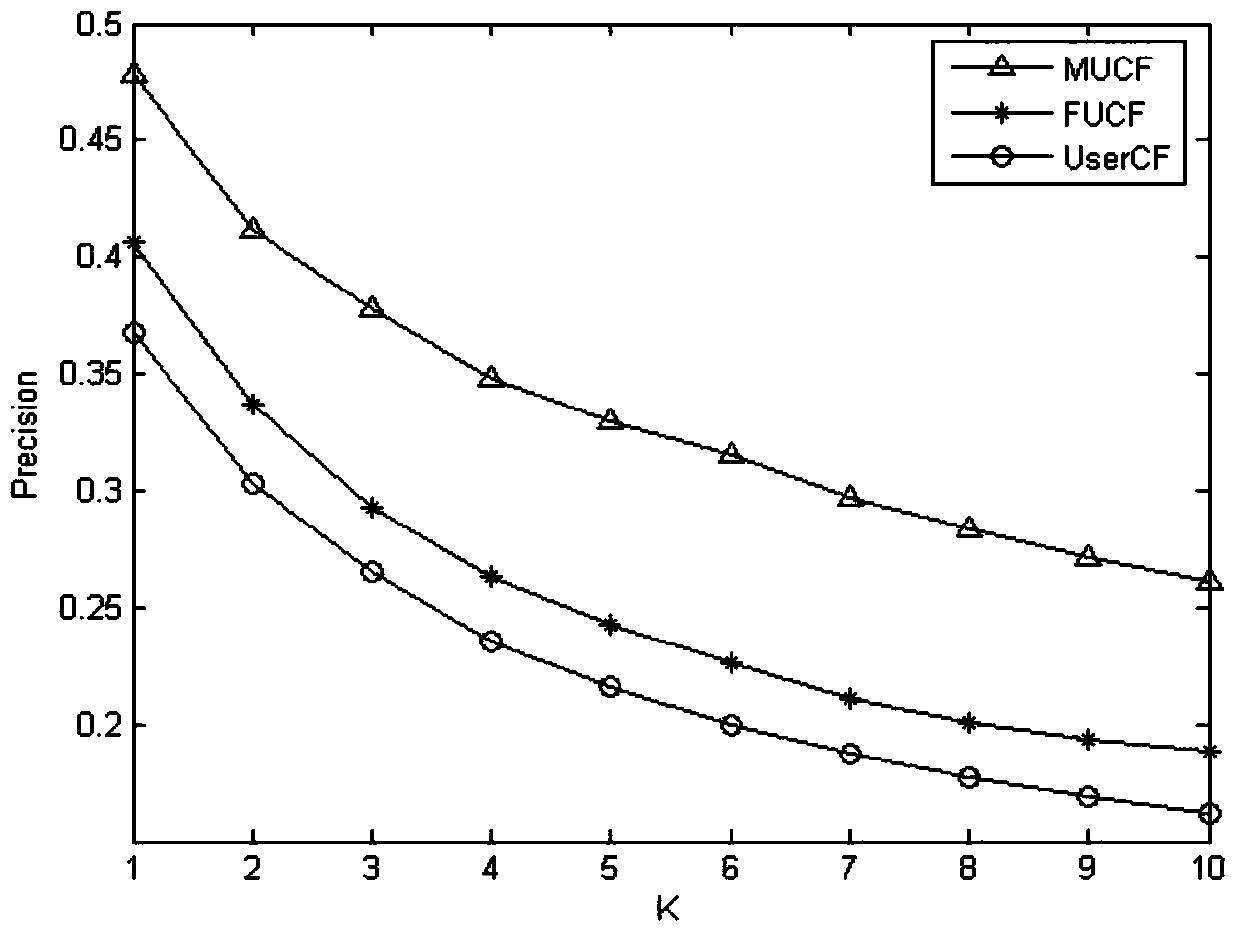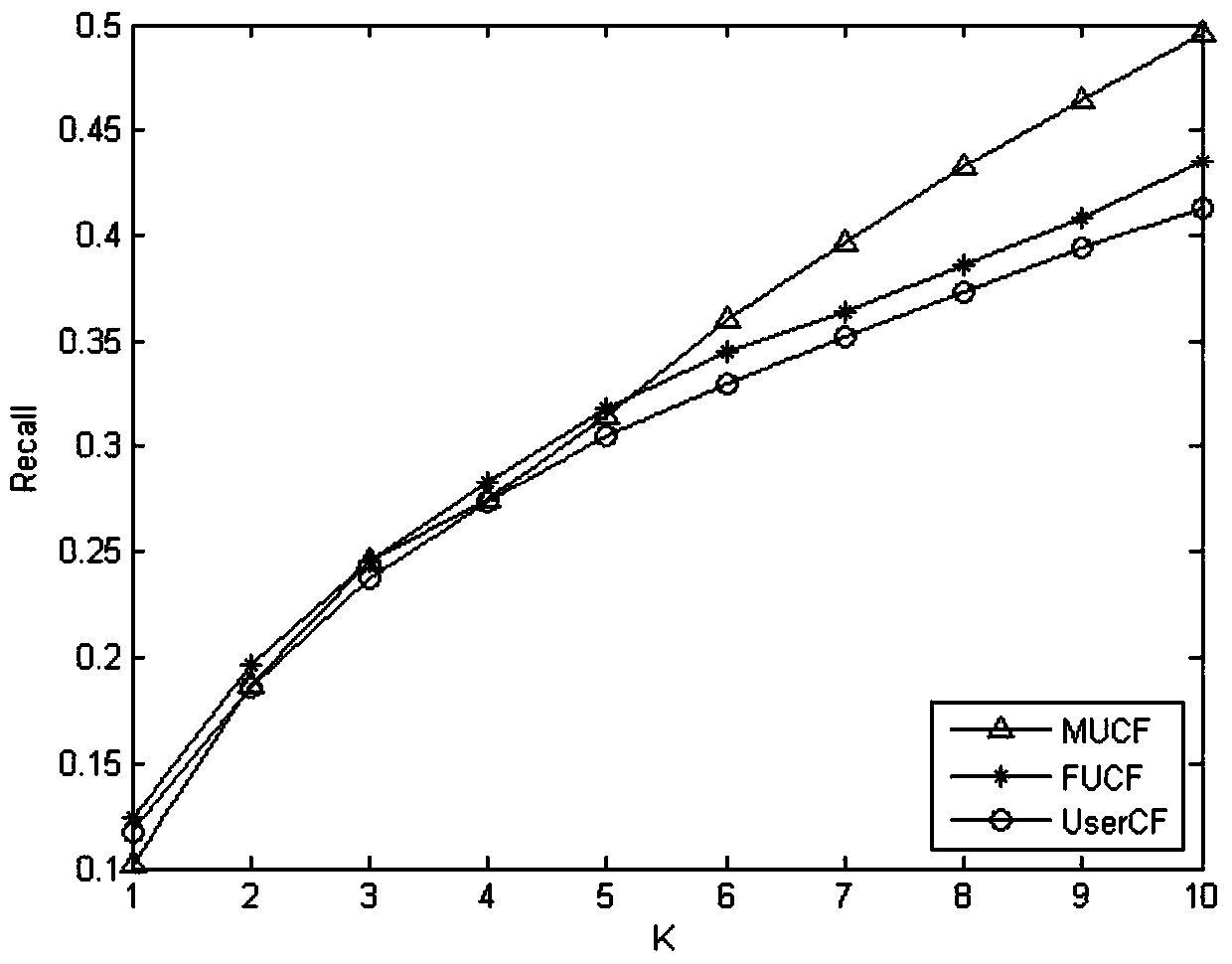An ontology-based travel information recommendation method
An information recommendation and ontology technology, applied in the field of ontology-based travel information recommendation, can solve problems such as inaccurate travel recommendation results, and achieve the effect of avoiding wasting time and improving accuracy
- Summary
- Abstract
- Description
- Claims
- Application Information
AI Technical Summary
Problems solved by technology
Method used
Image
Examples
specific Embodiment approach 1
[0034] Specific Embodiments Specific Embodiment One: Combining figure 1 To illustrate this embodiment, a method for recommending travel information based on ontology in this embodiment is specifically carried out according to the following steps:
[0035] Step 1. Construct the ontology of tourist attractions;
[0036] Step 2, using the FP-Growth algorithm to mine association rules between users;
[0037] The FP-Growth algorithm is a frequent pattern growth algorithm;
[0038] Step 3, using the threshold value of the association rule to divide the users into two categories, one is the associated user, and the other is the irregular user; the threshold is set artificially;
[0039] Step 4: Use the collaborative filtering algorithm that incorporates time factors and evaluation factors to generate scenic spot recommendations for associated users;
[0040] Step 5, use the collaborative filtering algorithm based on the ontology of tourist attractions for irregular users to gener...
specific Embodiment approach 2
[0044] Specific implementation mode two: the difference between this implementation mode and specific implementation mode one is: the tourist attraction ontology is constructed in the described step one; the specific process is:
[0045] Step 11. From N documents (for example: Feng Xin, Wang Chengliang. Application Research of Ontology in Tourism Information System [J] Computer and Modernization. 2010(3): 128-133.
[0046] Zhong Fujin. The practice of OWL-based ontology construction in the field of tourism [J] Popular Science and Technology. 2010(3):17-20.
[0047] Chen Yanping, Wei Lulu. The construction of tourism domain ontology based on OWL [J] Journal of Xi'an University of Posts and Telecommunications. 2011,12(1):78-83.
[0048]Hu Nana, Li Linlin, Wu Shang. Personalized Tourist Recommendation System. [J] Information Technology. 2013(2): 135-140.) Import the scenic spot ontology into the tourist spot ontology to be constructed. N In the process of merging, formulate the ...
specific Embodiment approach 3
[0058] Embodiment 3: This embodiment differs from Embodiment 1 or Embodiment 2 in that: the structure of the tourist attraction body is a tree structure, and the nodes between the upper and lower levels have a clear parent-child relationship, and each node is an individual , there is no intersection with other nodes in the same layer.
[0059] Nodes are the types of tourist information involved in tourist attractions, for example, attractions include: transportation, accommodation, food, etc.
[0060] Other steps and parameters are the same as those in Embodiment 1 or Embodiment 2.
PUM
 Login to View More
Login to View More Abstract
Description
Claims
Application Information
 Login to View More
Login to View More - R&D
- Intellectual Property
- Life Sciences
- Materials
- Tech Scout
- Unparalleled Data Quality
- Higher Quality Content
- 60% Fewer Hallucinations
Browse by: Latest US Patents, China's latest patents, Technical Efficacy Thesaurus, Application Domain, Technology Topic, Popular Technical Reports.
© 2025 PatSnap. All rights reserved.Legal|Privacy policy|Modern Slavery Act Transparency Statement|Sitemap|About US| Contact US: help@patsnap.com



